India’s first ever mobile, internet and technology event, the
India Mobile Congress
2017 (IMC), concluded on Friday, leaving in its wake a road map for the Digital India of tomorrow – one where private and government players align to herald in a digital age powered by 5G. [caption id=“attachment_4088841” align=“alignleft” width=“380”]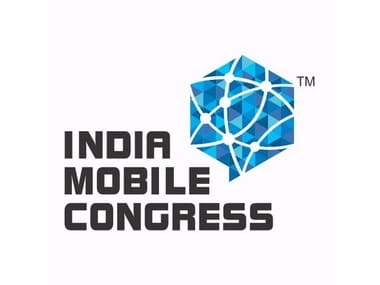 Image credit: IMC Twitter[/caption] While IMC 2017 was touted as a big success by the organisers, many at the event couldn’t help but feel a bit let down by the tech on display and the lack of basic amenities at the event – the absence of free-Wi-Fi at an event proclaiming the benefits of data inclusion and free public hotspots was ironic to say the least. Nonetheless, there is no doubt that the event has sent out strong signals to the world that India is ready to accommodate and incentivise digitisation. IMC has now been established as a signature annual event for the growing mobile, Internet and technology ecosystem in India. While the event made a lot of headlines owing to its line-up of prominent ministers and industry giants – where industry rivals and government honchos all seemed to have ‘come together’ on a common platform – the tech on display at the event and most of the keynotes and seminars revolved around the idea of Digital India through privatisation and the advent of 5G. The government on Tuesday had set up a high-level 5G committee with a mandate to lay down a road map for rollout of the technology by 2020. [caption id=“attachment_4096941” align=“alignnone” width=“1280”]
Image credit: IMC Twitter[/caption] While IMC 2017 was touted as a big success by the organisers, many at the event couldn’t help but feel a bit let down by the tech on display and the lack of basic amenities at the event – the absence of free-Wi-Fi at an event proclaiming the benefits of data inclusion and free public hotspots was ironic to say the least. Nonetheless, there is no doubt that the event has sent out strong signals to the world that India is ready to accommodate and incentivise digitisation. IMC has now been established as a signature annual event for the growing mobile, Internet and technology ecosystem in India. While the event made a lot of headlines owing to its line-up of prominent ministers and industry giants – where industry rivals and government honchos all seemed to have ‘come together’ on a common platform – the tech on display at the event and most of the keynotes and seminars revolved around the idea of Digital India through privatisation and the advent of 5G. The government on Tuesday had set up a high-level 5G committee with a mandate to lay down a road map for rollout of the technology by 2020. [caption id=“attachment_4096941” align=“alignnone” width=“1280”]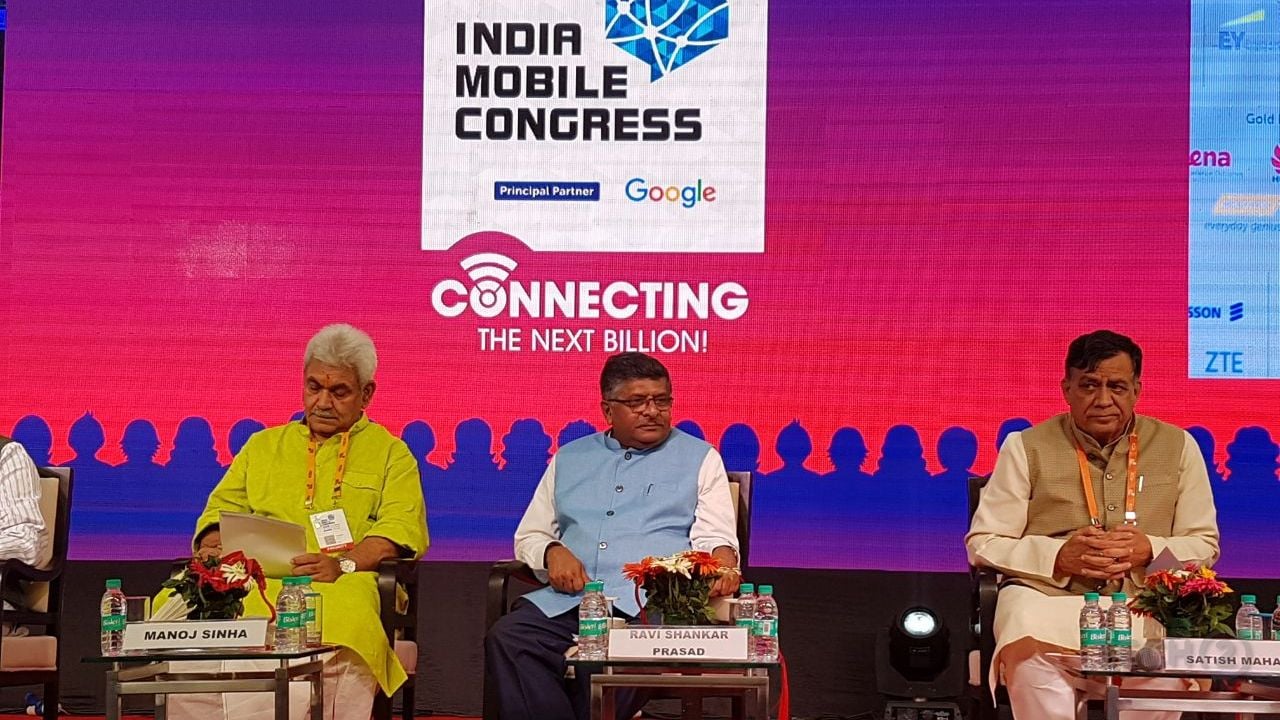 India Mobile Congress[/caption] “We have created a high-level 5G committee that will work on vision, mission and goals of 5G. When the world will roll out 5G in 2020, I believe India will be at par with them,” Telecom Minister Manoj Sinha had said. The government is said to be working on creating a corpus of Rs 500 crore to fund 5G activity, mainly on research and product development. Mukesh Ambani, chairman of Reliance Industries and Sunil Bharti Mittal, founder and chairman of Bharti Enterprises, echoed the views of the government as they all seemed to pitch a 5G-blueprint for furthering the multi-stakeholder approach to digitisation. Rapid digitisation: A boon or a curse? But while a rapid shift towards digitising India and its governance to foster inclusion seemed to be the central theme of the event, many expressed concerns over the perils of accumulating sensitive data and handing it over to private firms. Speaking at a seminar on cyber security, Captain Raghu Raman, former head of the National Intelligence Grid in the Government of India, voiced the perils of rapid digitisation without a proper safety net. “Cyber war is a war of the minds. Simply denying the existence of a problem is not going to make it go away. The government just hands out guidelines to the citizens – like one should always verify IMEI numbers of their phones – and simply shifts the responsibility. There needs to be accountability on part of the government to protect against foreign cyber-attacks,” he said. (
Read India Mobile Congress 2017: Data inclusion, security feature heavily on Day 1 for more on the security debate.
) But beyond the keynotes, seminars, warnings and bureaucratic engagements, IMC 2017 saw some interesting new technology on display and also showcased the power and benefits of 5G. Here is all the new technology showcased at IMC 2017 LG K7i smartphone with inbuilt mosquito-repellent [caption id=“attachment_4096911” align=“alignnone” width=“1280”]
India Mobile Congress[/caption] “We have created a high-level 5G committee that will work on vision, mission and goals of 5G. When the world will roll out 5G in 2020, I believe India will be at par with them,” Telecom Minister Manoj Sinha had said. The government is said to be working on creating a corpus of Rs 500 crore to fund 5G activity, mainly on research and product development. Mukesh Ambani, chairman of Reliance Industries and Sunil Bharti Mittal, founder and chairman of Bharti Enterprises, echoed the views of the government as they all seemed to pitch a 5G-blueprint for furthering the multi-stakeholder approach to digitisation. Rapid digitisation: A boon or a curse? But while a rapid shift towards digitising India and its governance to foster inclusion seemed to be the central theme of the event, many expressed concerns over the perils of accumulating sensitive data and handing it over to private firms. Speaking at a seminar on cyber security, Captain Raghu Raman, former head of the National Intelligence Grid in the Government of India, voiced the perils of rapid digitisation without a proper safety net. “Cyber war is a war of the minds. Simply denying the existence of a problem is not going to make it go away. The government just hands out guidelines to the citizens – like one should always verify IMEI numbers of their phones – and simply shifts the responsibility. There needs to be accountability on part of the government to protect against foreign cyber-attacks,” he said. (
Read India Mobile Congress 2017: Data inclusion, security feature heavily on Day 1 for more on the security debate.
) But beyond the keynotes, seminars, warnings and bureaucratic engagements, IMC 2017 saw some interesting new technology on display and also showcased the power and benefits of 5G. Here is all the new technology showcased at IMC 2017 LG K7i smartphone with inbuilt mosquito-repellent [caption id=“attachment_4096911” align=“alignnone” width=“1280”]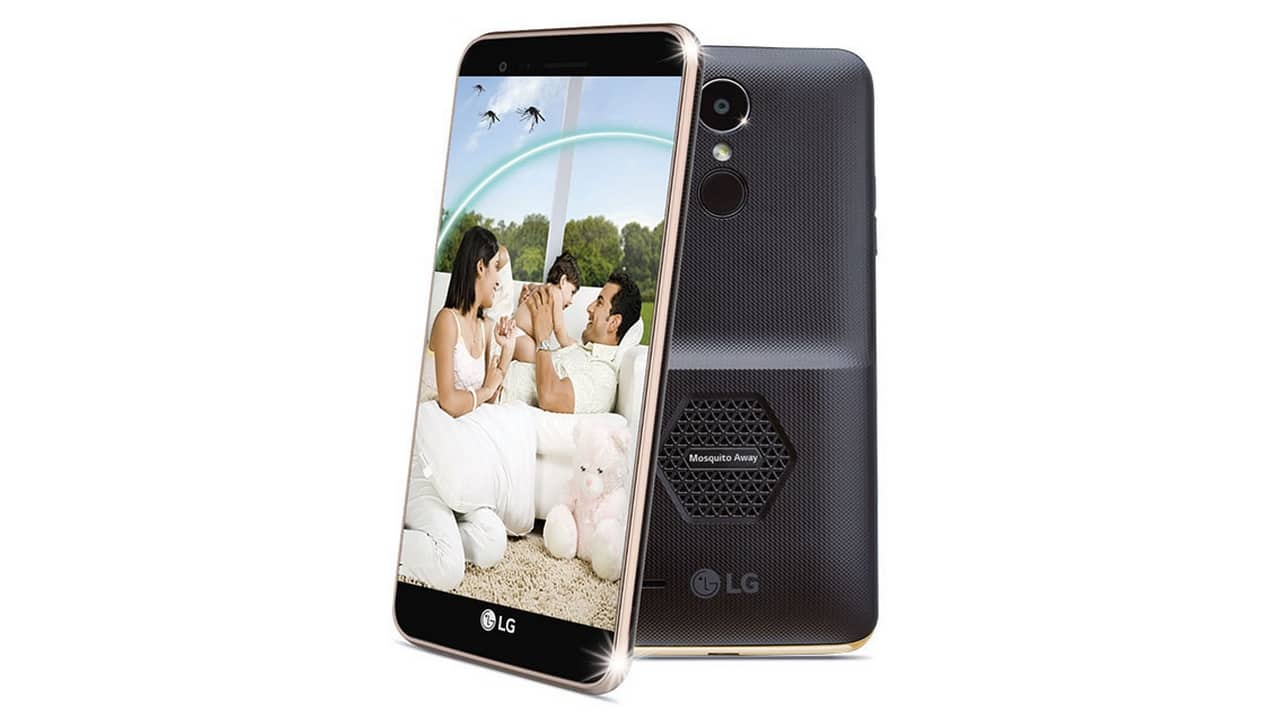 LG K7i smartphone[/caption] LG attracted a lot of eyeballs at the event with the launch of a unique budget smartphone at the IMC, the LG K7i. The phone features a ‘
Mosquito Away Technology
’ that supposedly drives away mosquitoes. As per a LG exhibitor, the device emits sound waves at an ultrasonic frequency which irritate mosquitoes but are inaudible to humans. The technology, as per the official, will also be available in a host of home appliances like TVs washing machines etc.
The LG K7i will be priced at Rs 7,990 and will be available across retail outlets in India. 5G future Nokia, ZTE and Ericsson showcased their preparedness to welcome in 5G and displayed a host of products that can take advantage of the 5G network. Apart from displaying the capability of their devices, some manufactures, like Ericsson, showcased the advantages of 5G over 4G via use cases.
A self-balancing robot that is able to stand up straight thanks to minimal latencies on 5G, trembles and falls when the latency is increased to 4G levels. The simple demonstration showed how a shift to 5G could help improve machine-to-machine communications and for automating tasks at remote locations. Another interesting application of 5G was showcased through a robotic arm that mimicked the movements of a human hand with precision. Theoretically, the reduced latency levels of 5G could enable surgeons to conduct operations remotely with increased precision. JioPhone and TV features [caption id=“attachment_3970033” align=“alignnone” width=“1280”]
LG K7i smartphone[/caption] LG attracted a lot of eyeballs at the event with the launch of a unique budget smartphone at the IMC, the LG K7i. The phone features a ‘
Mosquito Away Technology
’ that supposedly drives away mosquitoes. As per a LG exhibitor, the device emits sound waves at an ultrasonic frequency which irritate mosquitoes but are inaudible to humans. The technology, as per the official, will also be available in a host of home appliances like TVs washing machines etc.
The LG K7i will be priced at Rs 7,990 and will be available across retail outlets in India. 5G future Nokia, ZTE and Ericsson showcased their preparedness to welcome in 5G and displayed a host of products that can take advantage of the 5G network. Apart from displaying the capability of their devices, some manufactures, like Ericsson, showcased the advantages of 5G over 4G via use cases.
A self-balancing robot that is able to stand up straight thanks to minimal latencies on 5G, trembles and falls when the latency is increased to 4G levels. The simple demonstration showed how a shift to 5G could help improve machine-to-machine communications and for automating tasks at remote locations. Another interesting application of 5G was showcased through a robotic arm that mimicked the movements of a human hand with precision. Theoretically, the reduced latency levels of 5G could enable surgeons to conduct operations remotely with increased precision. JioPhone and TV features [caption id=“attachment_3970033” align=“alignnone” width=“1280”]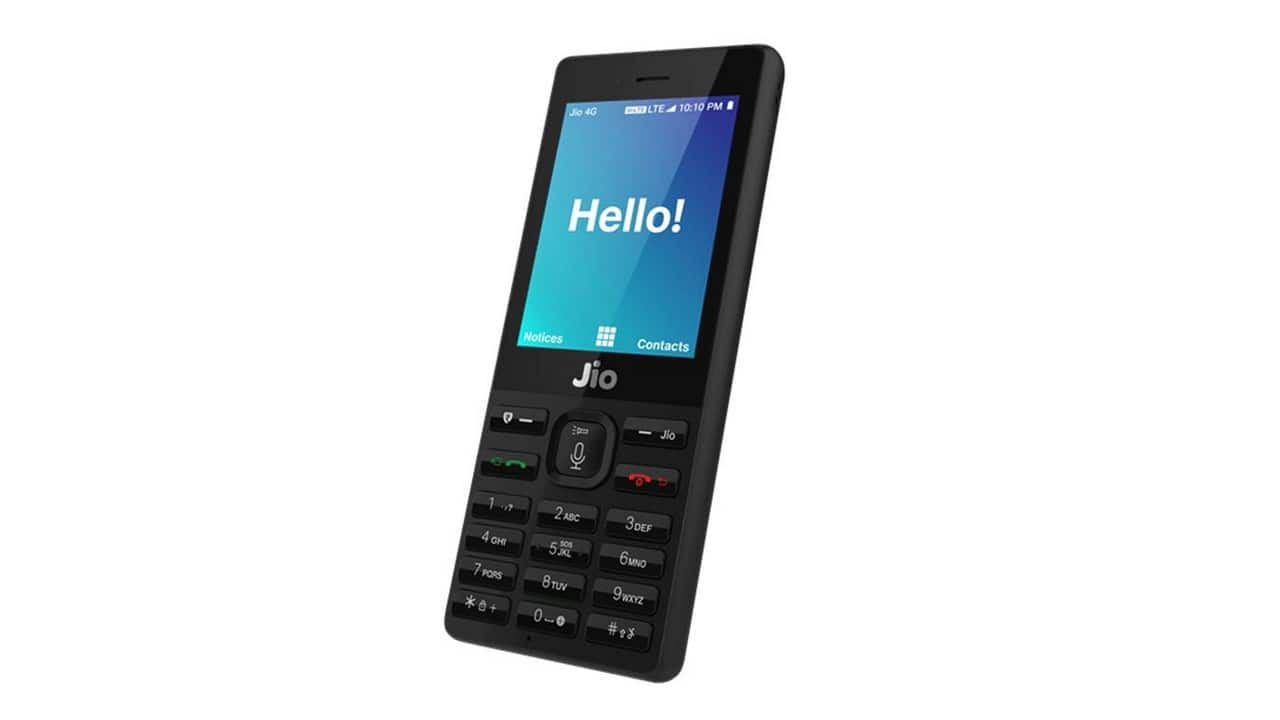 JioPhone[/caption] After the launch of the ultra-affordable Rs 1500
Jio feature phone
, the company showcased another interesting capability of the device. By using a simple dongle, the phone can connect to any TV – CRT or LCD flat screen – to display live TV via the Jio TV app. The dongles, which are sold separately, comes in two varieties, one with an RCA port and the other with an HDMI port. The dongle also charges your phone as you watch TV on the big screen. The dongles have not yet launched in the market and the pricing is still to be finalised. MediaTek entry level 4G chipset Taiwan-based semiconductor leader MediaTek launched its new MT6739 chipset at IMC designed for mid-to entry-level 4G smartphone users. The high-speed quad-core SoC supports dual-camera photography and 18:9 display support to bring the latest 4G LTE functions to mid and low budget users. MT6739 is a quad-core 64bit ARM Cortex-A53 processor and operates up to 1.5 GHz. Devices enabled by the chipset will be available in India and the global market by the end of this year. The Rs 300 phone But the unlikely star attraction of the IMC that saw a huge number of people on all three days was a exhibition put up by a feature phone-manufacturing company Detel. Their range of phones, starting with the D1 model starts at Rs 300. A lot of people were seen purchasing the D1, and the popularity of the phone forced the manufacturers to arrange for additional stocks. All in all the first edition of the IMC can be deemed as a success based on its concept and the response from the global community. However, given the lower-than-expected footfall, the absence of basic amenities and the lack of new big tech releases often associated with big mobile events like the MWC in Barcelona, it is safe to say that it IMC can only go up from here.
JioPhone[/caption] After the launch of the ultra-affordable Rs 1500
Jio feature phone
, the company showcased another interesting capability of the device. By using a simple dongle, the phone can connect to any TV – CRT or LCD flat screen – to display live TV via the Jio TV app. The dongles, which are sold separately, comes in two varieties, one with an RCA port and the other with an HDMI port. The dongle also charges your phone as you watch TV on the big screen. The dongles have not yet launched in the market and the pricing is still to be finalised. MediaTek entry level 4G chipset Taiwan-based semiconductor leader MediaTek launched its new MT6739 chipset at IMC designed for mid-to entry-level 4G smartphone users. The high-speed quad-core SoC supports dual-camera photography and 18:9 display support to bring the latest 4G LTE functions to mid and low budget users. MT6739 is a quad-core 64bit ARM Cortex-A53 processor and operates up to 1.5 GHz. Devices enabled by the chipset will be available in India and the global market by the end of this year. The Rs 300 phone But the unlikely star attraction of the IMC that saw a huge number of people on all three days was a exhibition put up by a feature phone-manufacturing company Detel. Their range of phones, starting with the D1 model starts at Rs 300. A lot of people were seen purchasing the D1, and the popularity of the phone forced the manufacturers to arrange for additional stocks. All in all the first edition of the IMC can be deemed as a success based on its concept and the response from the global community. However, given the lower-than-expected footfall, the absence of basic amenities and the lack of new big tech releases often associated with big mobile events like the MWC in Barcelona, it is safe to say that it IMC can only go up from here.
India Mobile Congress 2017: A recap of India’s first global mobile tech event
Nitish Rampal
• September 30, 2017, 12:20:50 IST
While India Mobile Congress 2017 was touted as a big success by the organisers, many at the event couldn’t help but feel a bit let down by the tech on display and the lack of basic amenities at the event.
Advertisement
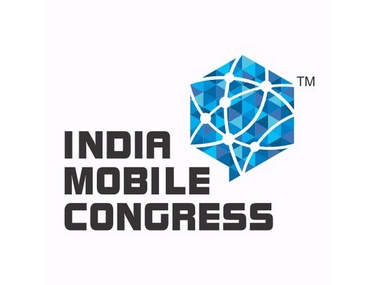)
End of Article